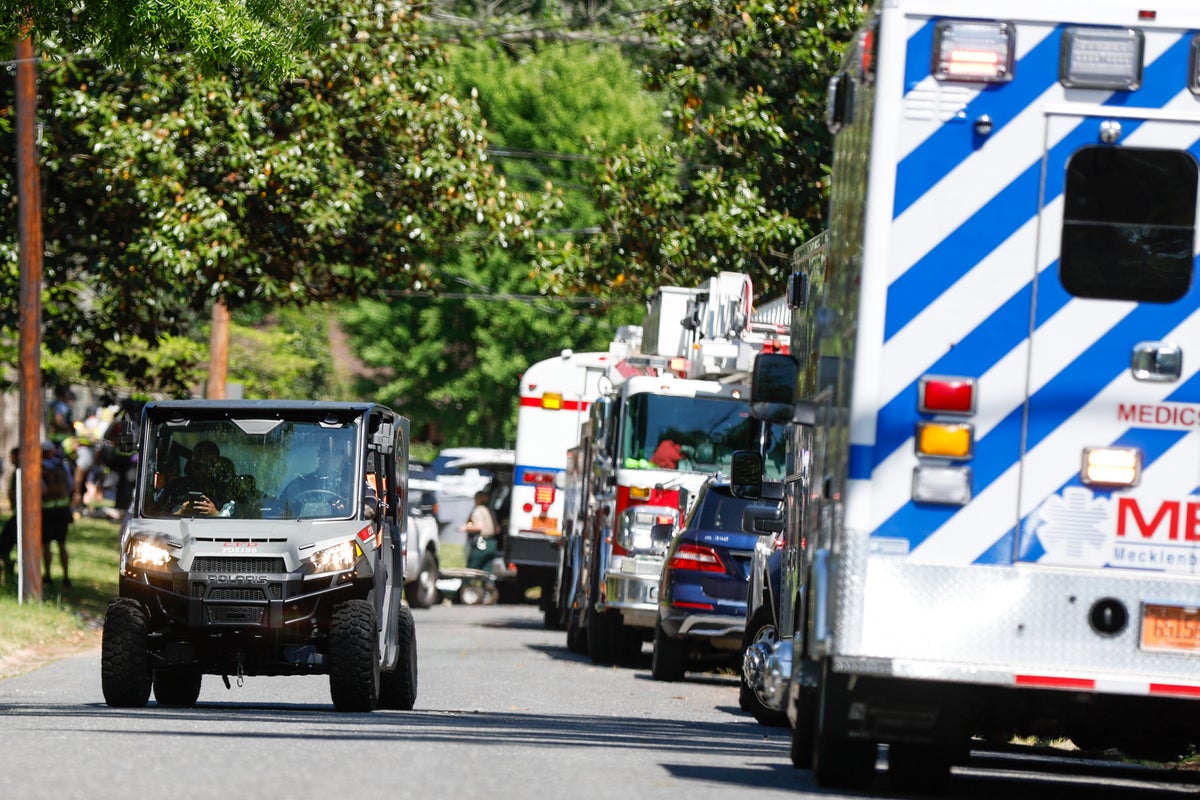
Support truly
independent journalism
More details on the death of the Charlotte gunman who carried out the deadliest attack on law enforcement officers since 2016 were released in state autopsy and toxicology reports.
Terry Clark Hughes Jr., 39, opened fire with an assault rifle on officers attempting to serve an arrest warrant on April 29, killing four officers and injuring another four. He eventually was shot 12 times after a lengthy standoff and died from his injuries, according to a North Carolina medical examiner's report obtained by local media outlets.
The report showed Hughes was shot both on his upper and lower body. THC, the psychoactive chemical in marijuana, was also found in his system, but other substances such as alcohol were not, according to a toxicology report.
The shooting in the residential neighborhood in east Charlotte eventually ended when Hughes jumped from a second-floor window into the front yard and was killed, according to police. At least 12 officers shot their guns during the standoff, police said.
There was initial confusion on whether Hughes acted alone in shooting at officers from the home’s second floor, as police floated the idea that there may have been a second shooter. That possibility was dispelled in a May 31 news conference when Charlotte-Mecklenburg Police Department Deputy Chief Tonya Arrington said Hughes was the sole gunman in the attack.
There were two females inside the home during the shooting, but police said they were not involved in the gunfire.
Hughes also had a lengthy criminal record dating back more than a decade, with state records showing charges such as breaking and entering, eluding arrest and illegal possession of a firearm by a felon.
The four officers killed by Hughes were Sam Poloche and William Elliott of the North Carolina Department of Adult Corrections; Charlotte-Mecklenburg Officer Joshua Eyer; and Deputy U.S. Marshal Thomas Weeks.
In the shooting's aftermath, the officers were commemorated in memorials around the state. President Joe Biden also visited North Carolina to privately meet with the officers' families.







